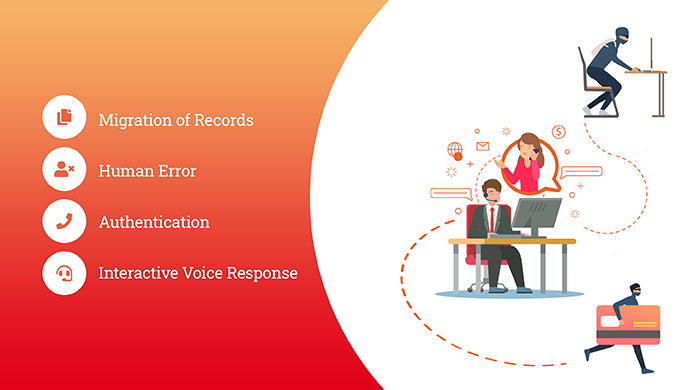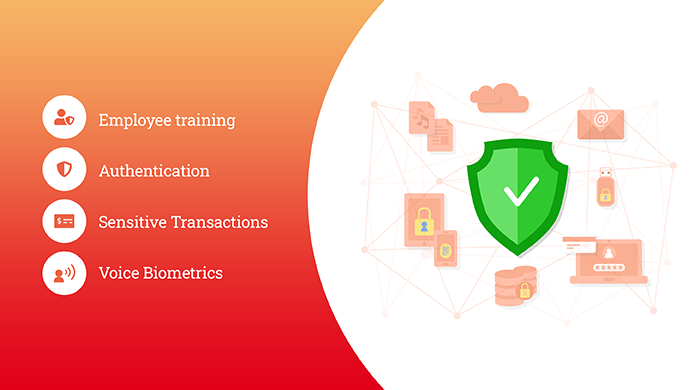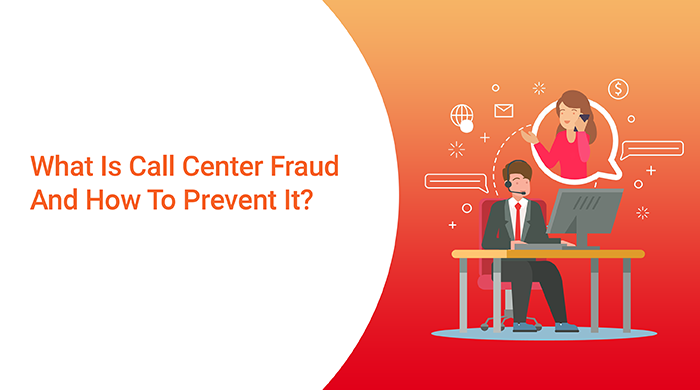Call center fraud occurs when an individual contacts an organization’s call center, pretending to be someone; they are not. The aim is to access the information of the organization’s customers. According to some studies, the incidence of call center fraud in the US alone has risen by 30% since 2013. Criminals contact the call center with specific information on a customer to gain complete control of their account or to create a new account in someone else’s name. Call center fraud is not isolated to any one field or industry but is instead prevalent in any organization that has call centers.
How Does Call Center Fraud Work?
While there are many ways in which call center fraud transpires, there are a few common tactics that criminals will fall back on.

- Migration of Records: During a merger between two organizations or a move of the headquarter, the records of existing customers are unorganized and disrupted. Perpetrators can take advantage of this small window of chaos to gain access to customers’ accounts and make changes such that it benefits them.
- Human Error: In a call center, the only thing between an imposter imitating as a client and the accounts is a very human call center operator. These operators are trained to help customers and provide a solution that leads to their satisfaction. Criminals know this and use frustration as a tactic to manipulate the call center operators into giving them access to a wide range of information.
- Authentication: Cybersecurity has come a long way since its inception and is increasingly difficult for criminals to crack. However, telephonic security is still stuck in a bygone era. Call centers routinely use authentication systems that are archaic and extremely easy to hack.
- IVR: Interactive Voice Response systems are even more natural to crack since the authentication system they use is basic. Criminals can easily find the necessary information and exploit the IVR to change PINs, get new debit cards sent to different addresses, and more.
How To Prevent Call Center Fraud?
For such a complicated situation as call center fraud, the solution, too, needs to be multi-layered. No one single action can halt call center fraud in its tracks. Here are a few different ways in which call center fraud can be stopped.

- Employee training: One of the most critical areas that need to be addressed is the lack of awareness most call center operatives have, on the issue of fraud. Employees need to be well-trained in the various security procedures and policies to stay vigilant.
- Authentication: Organizations should focus much of their energy on using new and improved methods of authentication. Systems codes sent to the registered email or mobile number can significantly increase security.
- Sensitive Transactions: Some types of transactions should be limited or denied in place of further authorization or authentication. This includes a change in address.
- Voice Biometrics: Using voice biometrics could be the new gold standard in security procedures for call centers. It relies on the voice of the customer and not on any other information that could be obtained by criminals.
Organizations could choose to use Text-dependent voice biometrics where a customer has to say a predetermined sentence. The new phase of this technology, however, is moving towards text-independent, where the system will be able to recognize a customer’s voice without having to hear a particular set of words.
Conclusion
Call center fraud is a constant and genuine menace that companies and individuals are continually trying to fight. It is a real threat that can jeopardize organizations financially and institutionally in a grave sense. While being cautious about sharing information over the phone to call center representatives is crucial, it is also equally important for companies to train their representatives and consumers to be aware of this threat by using voice biometrics, authentication techniques, and regular employee training.
It is also essential for consumers to understand what information is considered sensitive. This is why a lot of banks have started sending messages on their IVR, stating CVV, OTP, and other codes should not be shared even with their representatives. Similar educational means are needed to help combat fraud through call centers.
The crucial issue with call center fraud is prevention. The most significant problem with call center fraud is that once it takes place, finding a resolution that helps both the consumer and company is rare. These frauds usually take place with clients that are easier to manipulate, such as senior citizens. Companies must ensure adequate monitoring of their employees and client backgrounds and launch educational campaigns with these clients in mind as well. Training should include the legal ramifications of fraudulent activity as well as a clear example of what this activity means.

